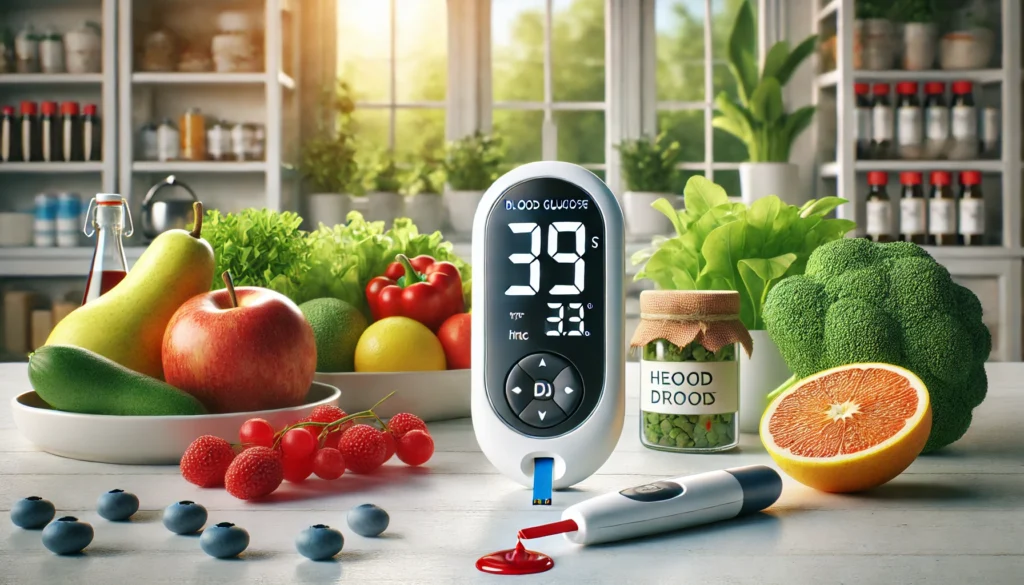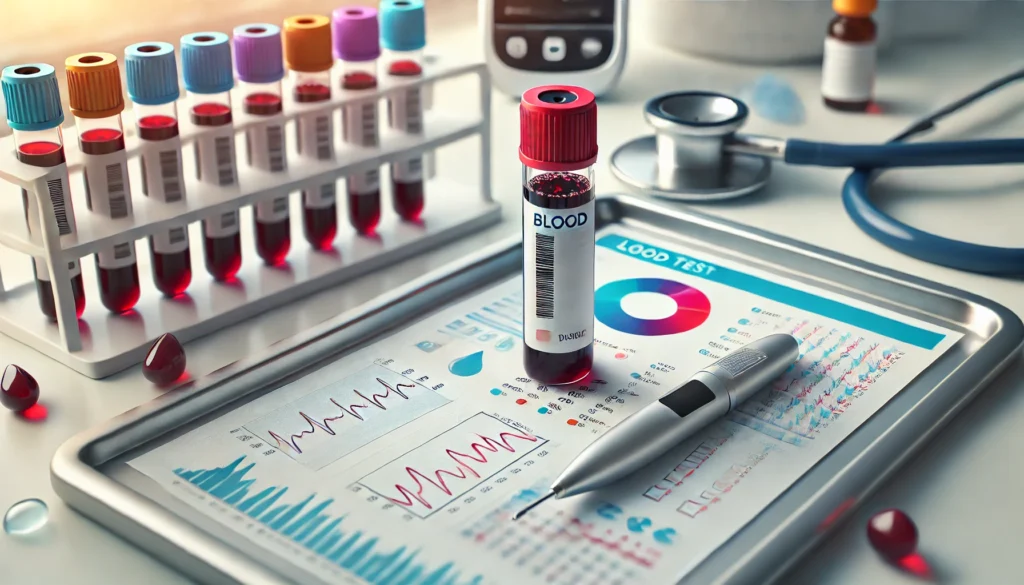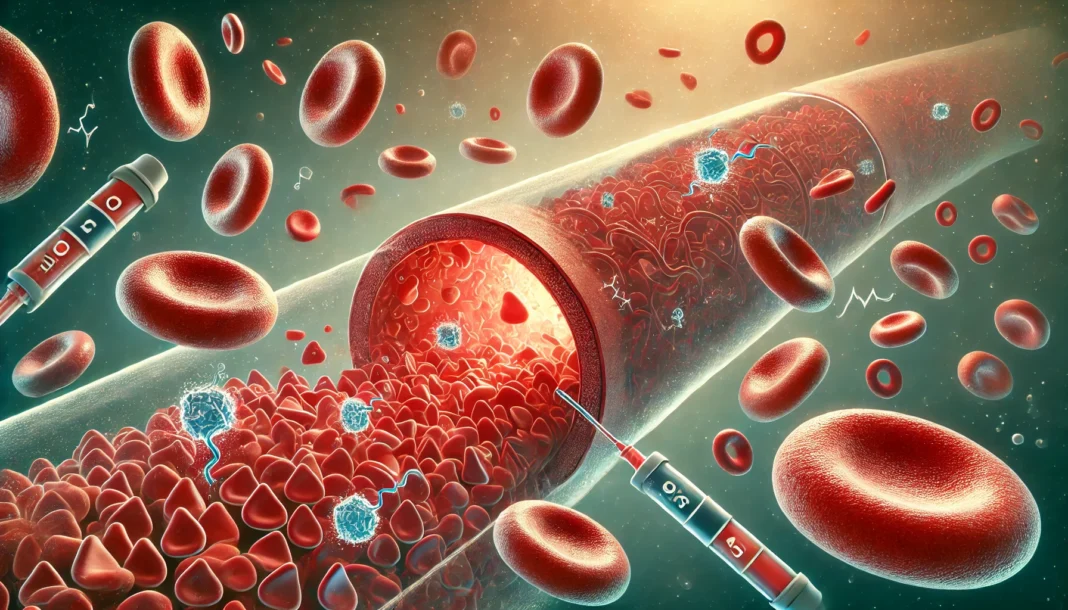Glucose plays a critical role in our body, serving as the primary source of energy for our cells. When you undergo a blood test, glucose levels are assessed to help determine how well your body manages blood sugar. This measurement can provide crucial insights into metabolic health, potential risks of diabetes, and overall well-being. Understanding what glucose means in a blood test is essential for maintaining optimal health and addressing concerns such as high fasting blood sugar or diabetic blood glucose levels. By exploring the significance of blood glucose, the factors influencing its levels, and how to interpret lab results, we can develop a more comprehensive perspective on blood sugar management and metabolic function.
You may also like: How Diabetes Affects the Brain: Understanding Brain Fog, Memory Loss, and Mental Confusion from High Blood Sugar
The Role of Glucose in the Body
Glucose is a simple sugar that serves as the body’s main energy source. It is derived from carbohydrates found in food, which the digestive system breaks down into glucose molecules that enter the bloodstream. The body’s ability to regulate blood sugar levels depends on a delicate balance maintained by the pancreas, liver, and hormones such as insulin and glucagon. Without adequate regulation, blood glucose levels may become too high or too low, leading to health complications.
When you consume carbohydrates, enzymes in the digestive system break them down into glucose, which is then absorbed into the bloodstream. The pancreas responds by releasing insulin, a hormone that facilitates the transport of glucose into cells for energy production. In contrast, when blood sugar levels drop, the pancreas releases glucagon, which signals the liver to convert stored glycogen into glucose and release it into the bloodstream. This finely tuned system ensures that blood sugar levels remain within a healthy range. Disruptions to this process, such as insulin resistance or insufficient insulin production, can lead to conditions like diabetes.

What Is a Blood Glucose Test?
A blood glucose test is a diagnostic tool used to measure the amount of sugar in your blood at a given time. This test helps determine whether your blood sugar levels are within a healthy range or if there are signs of prediabetes or diabetes. There are several types of blood glucose tests, each serving a specific purpose.
- Fasting Blood Sugar (FBS) Test: This test measures blood glucose levels after an overnight fast. A high fasting blood sugar level may indicate insulin resistance or diabetes.
- Random Blood Sugar Test: This test checks blood glucose levels at any time of the day, regardless of when you last ate. It is useful for identifying hyperglycemia.
- Oral Glucose Tolerance Test (OGTT): After drinking a glucose solution, blood sugar levels are tested at intervals to assess how well the body processes sugar. This test is often used for diagnosing gestational diabetes.
- Hemoglobin A1c Test (HbA1c): This test provides an average of blood sugar levels over the past two to three months, offering a long-term perspective on glucose control.
- Postprandial Blood Sugar Test: This measures blood glucose levels two hours after eating to evaluate how the body manages sugar intake.
Each of these tests helps assess different aspects of blood sugar regulation and provides valuable insights into metabolic health.
Interpreting Blood Glucose Test Results
Understanding blood glucose test results requires knowledge of normal, prediabetic, and diabetic ranges. Lab results typically indicate values in milligrams per deciliter (mg/dL) or millimoles per liter (mmol/L), depending on the country’s standard measurement system.
- Normal Blood Glucose Levels: A fasting blood sugar level below 100 mg/dL is considered normal. Postprandial blood sugar levels typically remain below 140 mg/dL.
- Prediabetes Blood Glucose Levels: A fasting blood sugar level between 100 and 125 mg/dL suggests impaired glucose regulation. If blood sugar levels two hours after eating range from 140 to 199 mg/dL, prediabetes may be present.
- Diabetic Blood Glucose Levels: A fasting blood sugar level of 126 mg/dL or higher on two separate occasions indicates diabetes. Similarly, an A1c level of 6.5% or higher confirms diabetes.
A high glucose blood test result may suggest uncontrolled diabetes, while persistently low blood sugar levels could indicate hypoglycemia, requiring further medical evaluation.
Factors Influencing Blood Sugar Levels
Many factors impact blood glucose levels, including diet, physical activity, stress, illness, and medication. Eating a high-carbohydrate meal causes a temporary increase in blood sugar, whereas regular physical activity enhances insulin sensitivity and helps regulate glucose levels. Stress and illness can trigger hormonal responses that elevate blood sugar, making it essential to monitor levels during times of physical or emotional distress.
Certain medications, such as corticosteroids, beta-blockers, and diuretics, may also affect blood sugar regulation. Individuals with diabetes or prediabetes should discuss medication adjustments with their healthcare provider if they notice significant fluctuations in blood glucose readings.
How to Check Your Blood Sugar Level at Home
For individuals managing diabetes or monitoring their blood sugar closely, home testing is an essential practice. A glucose meter or continuous glucose monitor (CGM) allows users to check their blood sugar levels conveniently. The process involves pricking the fingertip with a lancet, applying a drop of blood to a test strip, and inserting it into a glucose meter for a reading.
Frequent blood sugar monitoring helps individuals make informed decisions about diet, exercise, and medication. Those using CGMs benefit from continuous glucose tracking, allowing for real-time adjustments to blood sugar management strategies.
Managing Blood Sugar Levels for Optimal Health
Maintaining stable blood sugar levels is key to preventing complications associated with diabetes and metabolic disorders. A balanced diet rich in fiber, lean proteins, and healthy fats can help regulate blood sugar. Avoiding excessive sugar intake, processed foods, and refined carbohydrates minimizes glucose spikes.
Regular physical activity enhances insulin sensitivity, allowing cells to utilize glucose more effectively. Strength training, aerobic exercises, and daily movement contribute to better blood sugar control. Stress management techniques, such as meditation and deep breathing exercises, further support stable glucose levels.

Frequently Asked Questions About Blood Sugar, Glucose Testing, and Diabetes Management
1. Why do blood sugar levels fluctuate even with a consistent diet?
Even when you eat the same foods daily, blood sugar levels can vary due to factors like stress, sleep quality, hydration, and physical activity. Hormones such as cortisol and adrenaline can spike blood glucose levels during emotional or physical stress. Additionally, how your body absorbs nutrients may shift with age or gut health changes, altering your blood sugar response. Variations in insulin sensitivity—especially in people with diabetic blood glucose levels—can also lead to fluctuations without a dietary change. Understanding what blood sugar levels mean in different contexts can help you better interpret daily readings and improve long-term glucose control.
2. How do high fasting blood sugar readings relate to sleep quality and circadian rhythm?
Your circadian rhythm directly impacts insulin production and sensitivity. A disrupted sleep cycle, especially in shift workers, can cause high fasting blood sugar levels even without dietary changes. Research shows that melatonin, a hormone influenced by light exposure, can interfere with insulin secretion when released at the wrong time. People who frequently wake up with a blood sugar level of 90 or higher might benefit from consistent sleep schedules and reduced evening screen exposure. Monitoring blood glucose levels in tandem with sleep tracking can offer deeper insight into metabolic patterns often missed in routine labs.
3. Can physical fitness improve my mean blood glucose without medication?
Yes, consistent physical activity improves insulin sensitivity, helping lower mean blood glucose over time. Aerobic and resistance training have both been shown to reduce blood sugar levels in people with prediabetes and those experiencing early-stage diabetic blood glucose levels. Exercise also facilitates glucose uptake by muscles independent of insulin, which is particularly beneficial for individuals who show signs of insulin resistance. As mean blood glucose meaning correlates with long-term cardiovascular and metabolic health, integrating movement into daily routines becomes an effective non-pharmaceutical intervention. Remember to monitor your blood glucose targets and avoid overexertion if you’re adjusting to a new workout plan.
4. What role does hydration play in maintaining optimal blood glucose levels?
Staying hydrated helps your kidneys flush out excess glucose through urine, especially important when experiencing high glucose blood test results. Dehydration can falsely elevate what blood sugar levels mean on lab tests by concentrating glucose in the bloodstream. For individuals managing diabetes glucose levels, increased water intake can help stabilize daily readings and support metabolic detoxification. Plasma glucose means the portion of blood glucose available for cellular use, and water aids in its efficient distribution. Tracking both hydration and blood glucose can highlight patterns that aren’t immediately obvious through diet alone.
5. Why does my blood sugar two hours after eating remain elevated despite a low-carb diet?
If your blood sugar two hours after eating is consistently high, this could indicate delayed gastric emptying or impaired insulin response—issues that aren’t always addressed by cutting carbs. The composition of your meals (especially fats and proteins) can slow digestion, affecting blood glucose levels post-meal. Even with low glycemic foods, the body’s hormonal signaling plays a critical role in clearing glucose from the bloodstream. This is why diabetic blood glucose levels may not improve solely through dietary restriction. Using a continuous glucose monitor can help visualize how your body reacts to meal timing and macronutrient balance, providing insights beyond what a standard glucose blood test reveals.
6. Is blood glucose the same as blood sugar, and why does the terminology matter?
While “is blood glucose the same as blood sugar” and “is glucose level the same as blood sugar” seem like redundant questions, the distinction can be important in clinical and educational settings. Glucose is the specific type of sugar measured in the bloodstream, while blood sugar is a broader layman’s term. Understanding what does glucose mean in a blood test vs. what is blood sugar on a blood test can clarify results for patients and help guide appropriate care. Medical professionals often refer to plasma glucose, mean blood glucose, or fasting blood glucose to capture specific testing contexts. For patients, asking “what does glucose mean in a blood test” can open up productive conversations about tailored care strategies.
7. How do genetics affect your long-term blood glucose targets?
Genetics play a significant role in determining insulin sensitivity, pancreatic function, and glucose metabolism, all of which influence blood glucose targets. People with a family history of type 2 diabetes may see diabetic blood glucose levels earlier in life, even with a healthy lifestyle. Genes also regulate glucagon, another hormone critical in maintaining balanced blood glucose levels. Therefore, someone with a blood sugar level of 90 may be healthy in general terms but still be genetically predisposed to impaired glucose tolerance. Genetic testing, combined with tracking what is glucose in blood test data over time, can help identify personalized thresholds for early intervention.
8. What future technologies are emerging for better diabetes and glucose monitoring?
Innovations like non-invasive glucose sensors and AI-powered diagnostics are revolutionizing how we interpret what blood sugar levels mean. These advancements will soon allow users to track blood glucose without pricking their fingers, enhancing adherence and reducing discomfort. Wearables are increasingly able to predict blood glucose spikes using trends from heart rate variability, skin temperature, and sweat composition. For individuals with diabetes glucose levels to monitor daily, these tools promise a shift from reactive to proactive care. As machine learning continues to refine mean blood glucose predictions, even small deviations in high fasting blood sugar or post-meal spikes could trigger real-time alerts for early intervention.
9. How do psychological stress and mental health affect diabetic blood glucose levels?
Chronic stress increases cortisol levels, which directly elevate blood glucose and can contribute to persistent high fasting blood sugar. Individuals often overlook this link when asking, “Is 150 blood sugar high?” during periods of emotional strain. For those managing what is diabetes blood sugar levels daily, addressing mental health through therapy, mindfulness, or medication can significantly improve glucose regulation. Research shows that stress management programs lower both short- and long-term mean blood glucose levels. Incorporating stress assessments into how to check your blood sugar level routines can provide a fuller picture of metabolic health.
10. What should I know if my high glucose blood test was an isolated event?
A single high glucose blood test result doesn’t always indicate diabetes, especially if there were temporary influences like illness, medications, or stress. However, repeated elevated readings—especially when asking, “Is glucose level the same as blood sugar?”—may signal the need for further evaluation. In this context, knowing how to check your blood sugar level at home can offer valuable data between lab visits. Comparing your own “my sugar glucose” readings with established blood glucose targets can help differentiate between a one-time spike and a developing trend. If your mean blood glucose remains elevated over time, your doctor may begin investigating what is diabetes level based on A1c, fasting, and postprandial benchmarks.

Final Thoughts: Understanding Your Blood Glucose Results and Taking Control of Your Health
Understanding what glucose means in a blood test empowers individuals to take control of their metabolic health. Whether assessing blood sugar two hours after eating, monitoring fasting glucose levels, or evaluating long-term trends through an A1c test, these measurements provide valuable insights into how the body processes sugar. Managing blood glucose targets through a healthy lifestyle, medication when necessary, and regular monitoring ensures long-term well-being. By staying informed and proactive, individuals can make healthier choices and reduce the risk of complications associated with diabetes and blood sugar imbalances.
glucose metabolism, insulin resistance, diabetes prevention, healthy blood sugar levels, blood test results, fasting glucose, metabolic health, diabetic symptoms, managing diabetes, sugar regulation, glucose tolerance, hypoglycemia, hyperglycemia, blood sugar control, continuous glucose monitoring, glycemic index, low blood sugar symptoms, A1c test interpretation, lifestyle and blood sugar, diabetes risk factors
Further Reading:
Disclaimer: The content published on Better Nutrition News (https://betternutritionnews.com) is for informational and educational purposes only. It is not intended as a substitute for professional medical advice, diagnosis, or treatment. Always seek the guidance of a qualified healthcare professional before making any changes to your diet, nutrition, or wellness practices. The opinions expressed by authors and contributors are their own and do not necessarily reflect those of Better Nutrition News.
Better Nutrition News and its affiliates make no representations or warranties regarding the accuracy, completeness, or reliability of the information provided. We disclaim all liability for any loss, injury, or damage resulting from the use or reliance on the content published on this site. External links are provided for reference purposes only and do not imply endorsement.



